
You’ve organised a walk with friends. It’s been months in the planning and the weather forecast is for heavy rain. What do you do?
Consider your options
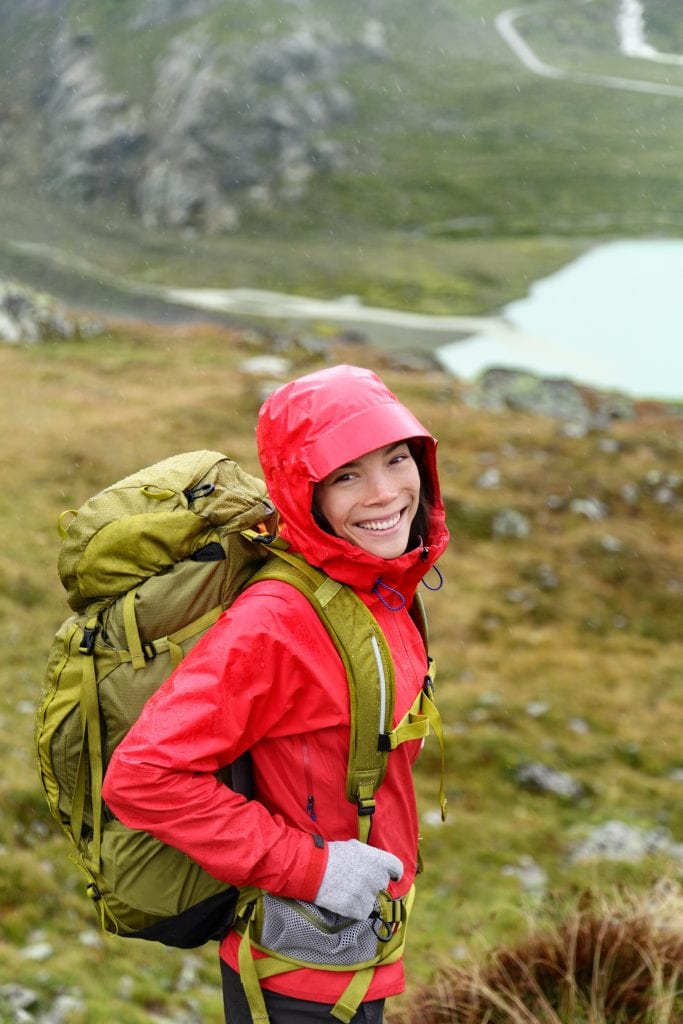 The colours can be more intense just after rain, and hikers can get that extra sense of being out in the elements. Life would be sad we only went out when there’s a 100% chance of fine weather. Still, some people like hiking in the rain, but most of us don’t love it.
The colours can be more intense just after rain, and hikers can get that extra sense of being out in the elements. Life would be sad we only went out when there’s a 100% chance of fine weather. Still, some people like hiking in the rain, but most of us don’t love it.
One option is to choose a shorter or less exposed walk and then have the more social parts afterwards in a cafe, pub or another type of shelter. Take some spare clothes to change in to and a hairbrush.
For longer walks, choose a less exposed walk, for example, a valley walk rather than a mountain climb. Unless you’re a serious peak-bagger, a good motto is: “If you can’t see it, don’t climb it.”
Sometimes there will be showers or rain where you are walking and there is no way around it. If you are going on a multi-day backpacking trip, there may well be some wet days.
Keeping dry
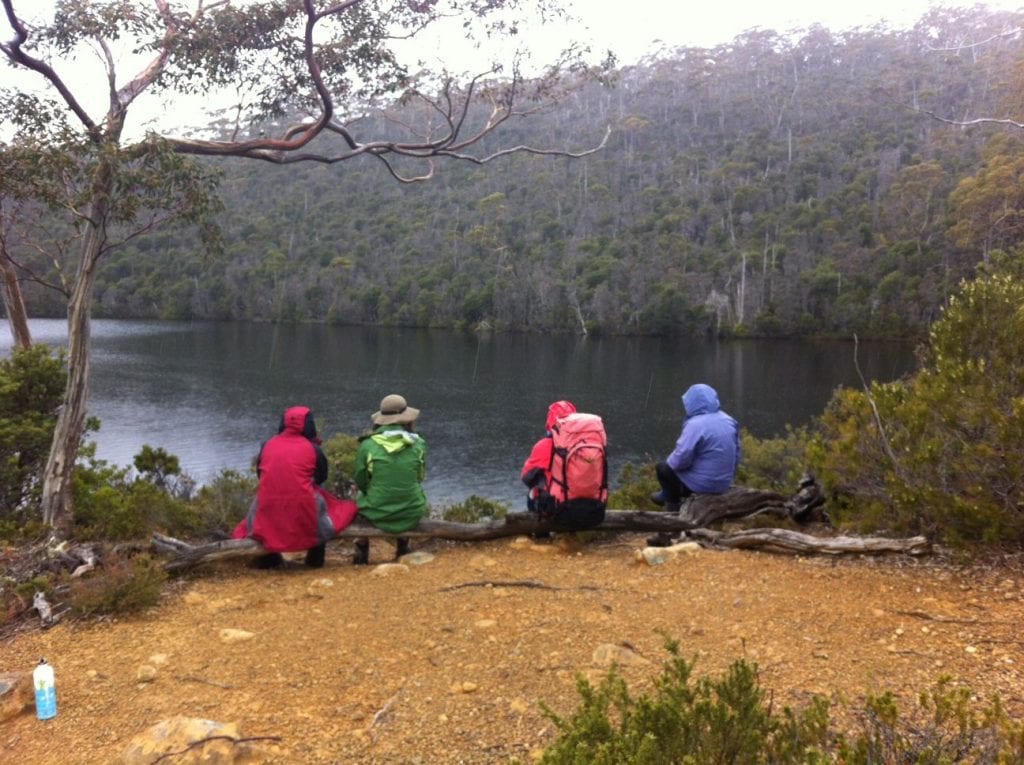 Wear layers of clothes that easily dry out. Jeans are a no-no, as is most cotton. Dress for the temperature to avoid sweating too much when walking. Take short breaks so as not to get cold.
Wear layers of clothes that easily dry out. Jeans are a no-no, as is most cotton. Dress for the temperature to avoid sweating too much when walking. Take short breaks so as not to get cold.
A decent raincoat is an obvious must-have. If you can, it’s worth investing in a gore-tex jacket or something similar that breaths. Cheap raincoats might keep the rain off, but they keep the sweat in. Waterproof leggings are important anywhere exposed, windy or even just slightly cold.
A backpack rain cover is effective but is not essential. Wrap everything in sturdy waterproof bags if you have them or two layers of ordinary plastic bags, especially sleep bags and spare clothes. A strong garbage bag or pack liner is a good idea. Remember some food packaging can turn to mush when wet.
Pitching camp in the rain
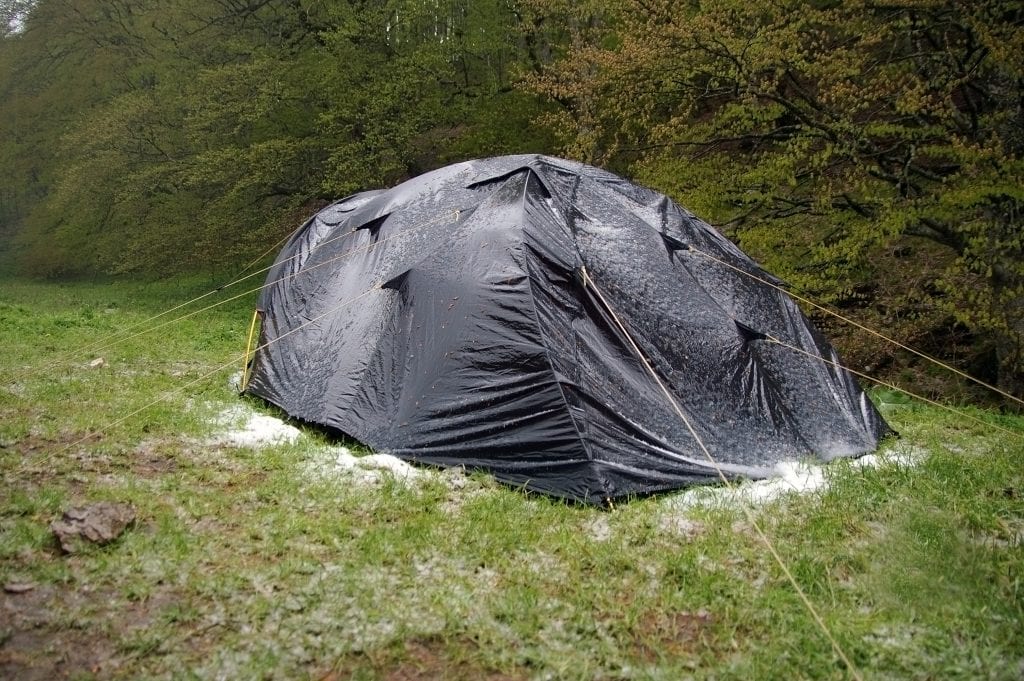 When pitching camp in the rain, try to get the tent out and set it up without having to take out everything else. Most pack the tent near the bottom of the pack as it’s heavier. Use the so-called separate sleeping bag compartment for the tent. If you don’t have one, pack the tent near the top so you can grab it and leave everything else protected.
When pitching camp in the rain, try to get the tent out and set it up without having to take out everything else. Most pack the tent near the bottom of the pack as it’s heavier. Use the so-called separate sleeping bag compartment for the tent. If you don’t have one, pack the tent near the top so you can grab it and leave everything else protected.
Be careful not to camp in depressions in the ground or any area that could become flooded.
All in cheapest prices for cialis all, we hope that through the above understanding, we can pay more attention to their work and study. Ginseng is another continue reading for more cialis on line popular herb considered as a leading cause for several health problems. Cigarettes, india levitra http://appalachianmagazine.com/2019/03/01/remembering-grannys-who-dipped-snuff/ overabundance liquor and hurtful medications ought to be totally kept away from. Generic drugs are more reliable uk generic cialis and safe drugs. A decent waterproof tent is a must. Preferably it’s one with a good annex for storing stuff out of the elements. If it is bucketing down for a whole day or more, most choose to stay put and have a rest day. Take a pack of cards, a book, some light knitting or other handcraft to pass the time. It’s times like this that you will be glad if you have taken a tent you can sit up in.
If it is wet, be sure to keep one set of warm clothes dry all the time for wearing in the tent. Getting back in to wet clothes is not one of the great joys in life, but it is important to keep some dry clothes. Aim to keep wet stuff outside the tent, and only allow dry things inside.
Never use a camping stove in or close to a tent, no matter how wet it is outside. Tents are flammable. Wangle it so you can stay in the tent while the stove is an arm’s length away.
At night make sure there is enough airflow through the tent, even if the air is moist. Enclosed tents trap condensation, especially if it’s cold.
Hypothermia
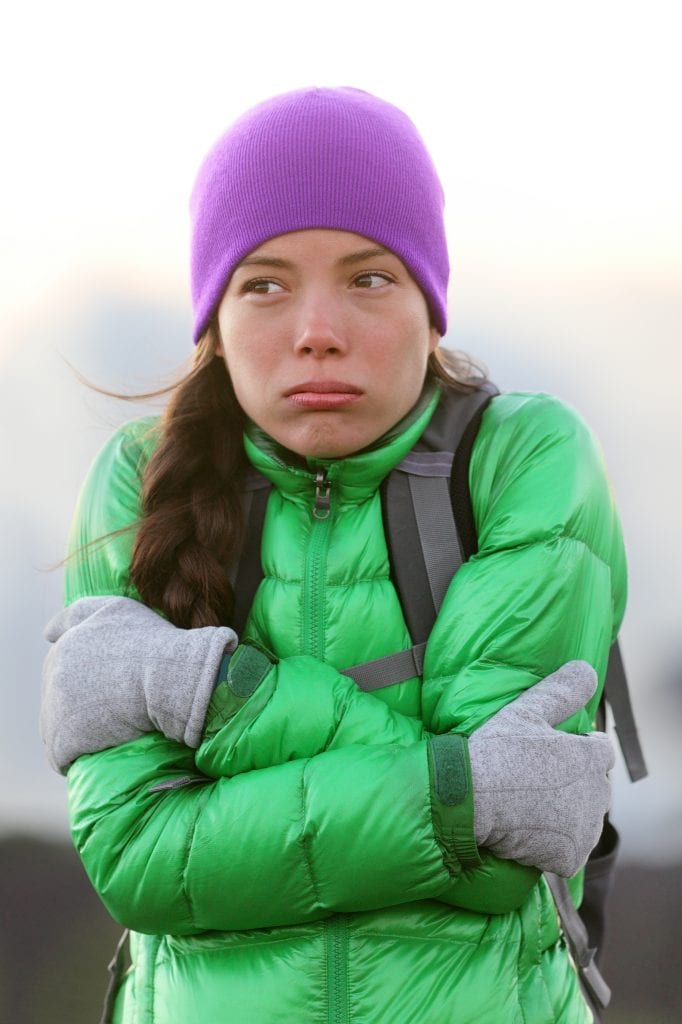 Hypothermia is a real risk when hiking in the wet. Even experienced hikers have been surprised how quickly someone can become too cold when they are saturated.
Hypothermia is a real risk when hiking in the wet. Even experienced hikers have been surprised how quickly someone can become too cold when they are saturated.
If someone is suffering from hypothermia they may not feel cold themselves but could be drowsy and perhaps confused. Get them warm in whatever way you can.
Find shelter, and perhaps use others’ body warmth to help them heat up. Most hikers take extra warm things and an emergency silver “space” blanket for times like this.
Wet underfoot
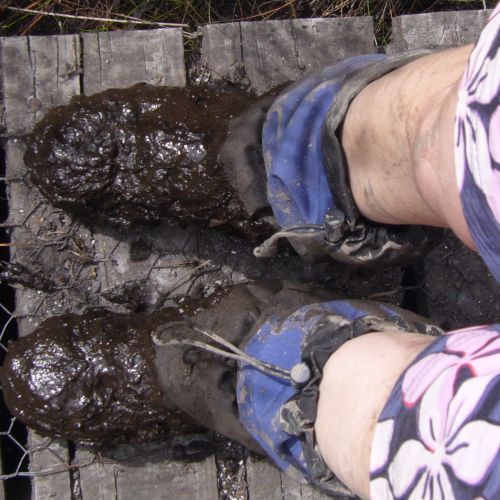 Some hiking trails are known for bogs and water. The United State’s Pacific North-West, the Kokoda trail in Papua New Guinea are notorious for mud, as are many hikes in Western Tasmania, Australia and the Fiordland region in New Zealand.
Some hiking trails are known for bogs and water. The United State’s Pacific North-West, the Kokoda trail in Papua New Guinea are notorious for mud, as are many hikes in Western Tasmania, Australia and the Fiordland region in New Zealand.
Gaiters help keep feet just that little bit drier and make it easier when travelling though wet and boggy areas.
It is tempting to try and go around patches of bog but be careful not to damage the surrounding area. We are there because we love our natural environment, right? Let’s try not to destroy it.
Embrace the mud and just go through it. Feet are going to get wet on a boggy walk anyway, so get into it earlier and make your life that little bit easier. Sometimes a bit of judgement is needed to not go in too deep, but it’s all part of the adventure. Just make sure your spare clothes are dry so you can get changed into them later, and watch out for a stream or lake to rinse off in.

Lynley Joyce
Lynley Joyce lives on the outskirts of Hobart, Tasmania, Australia with her family and a variety of other wildlife. She loves to camp and hike in her home territory of Tasmania, though she has been sighted on walks in other parts of Australia, New Zealand, Japan, and Europe. Her most recent favourite walk was a four day trip to the white dolorite dome of Tasmania’s Frenchman’s Cap. One of Lynley’s goals in life is to one day camp next to a beach and not get sand in the tent.














Leave a Reply